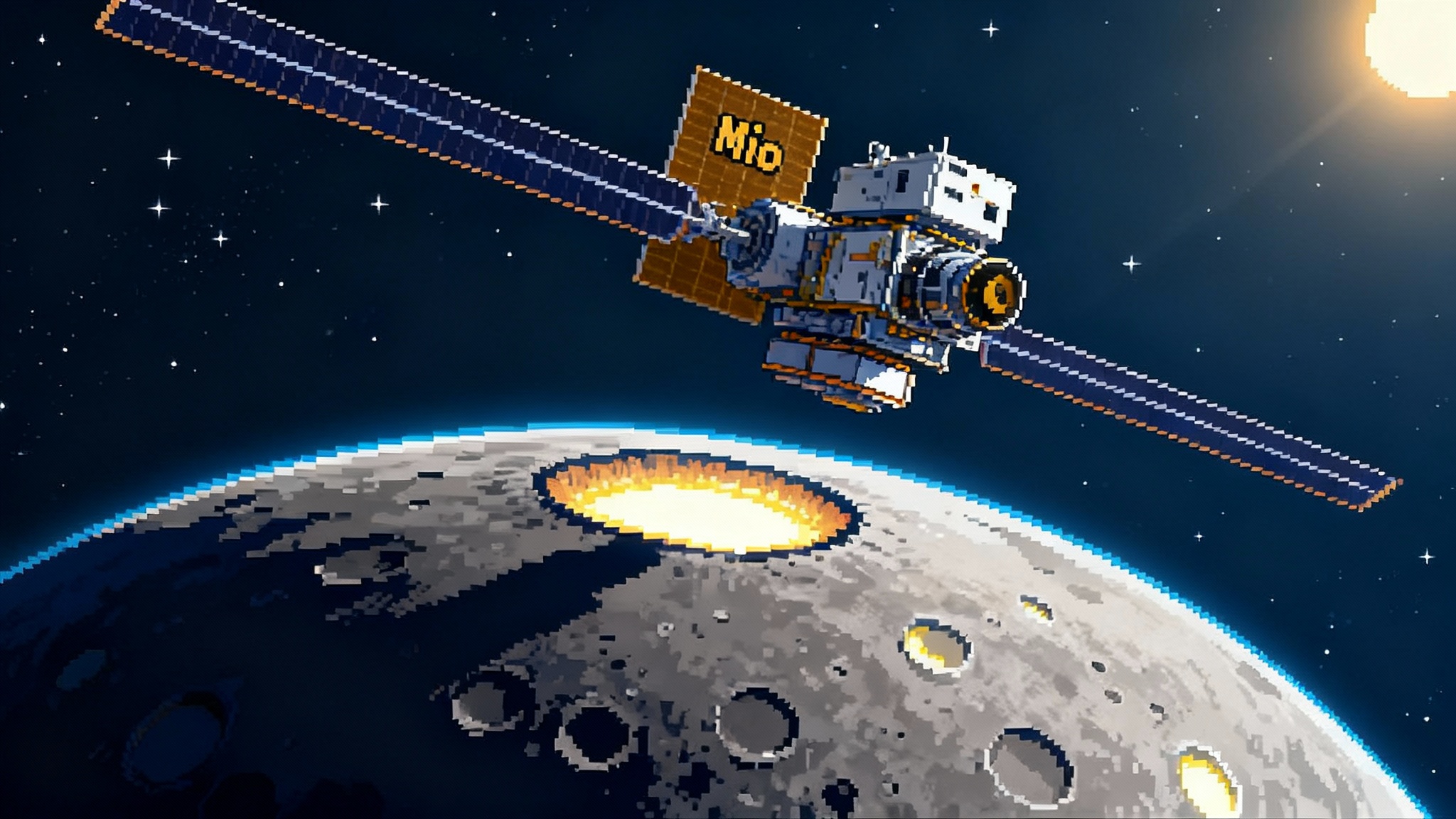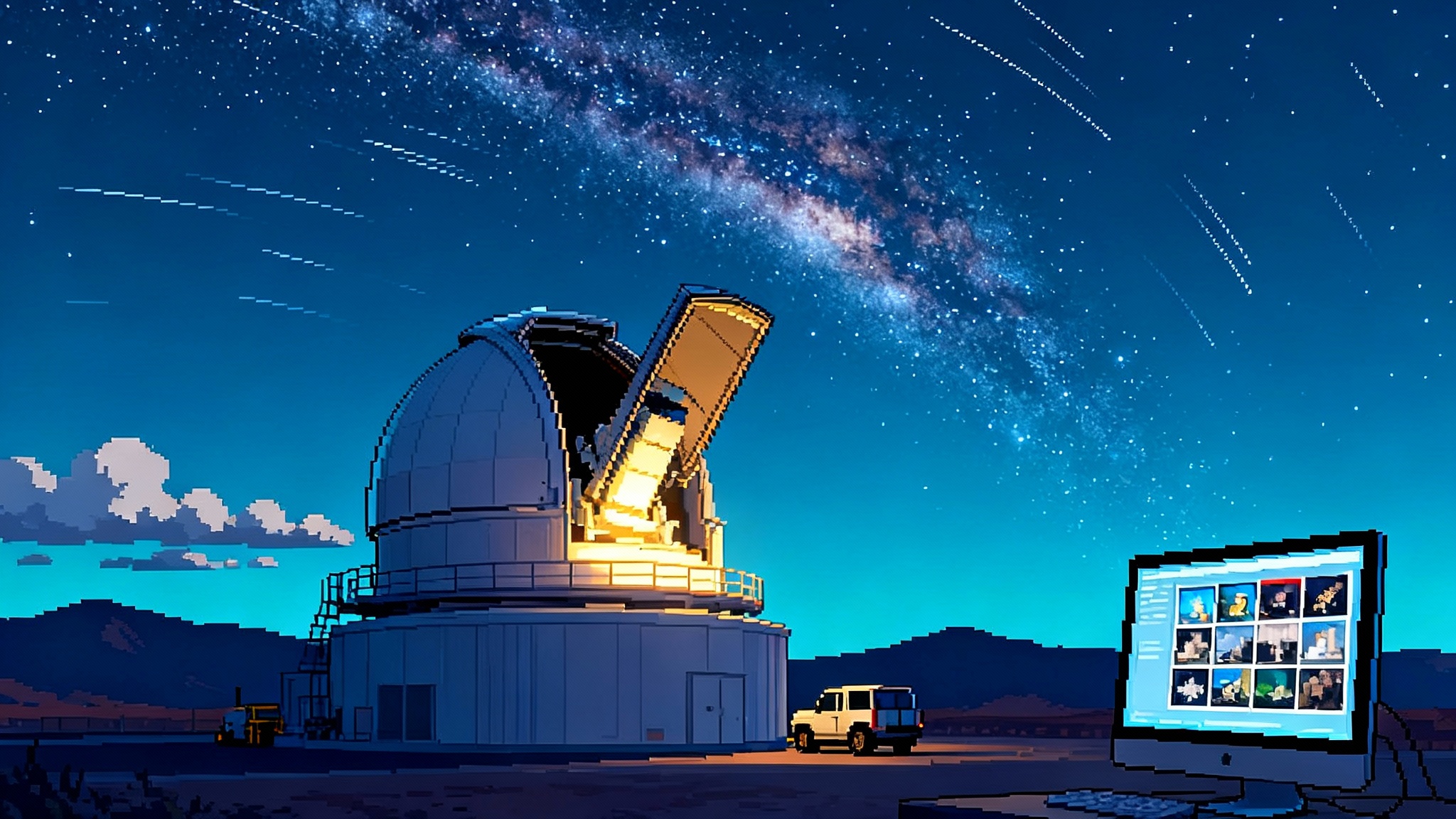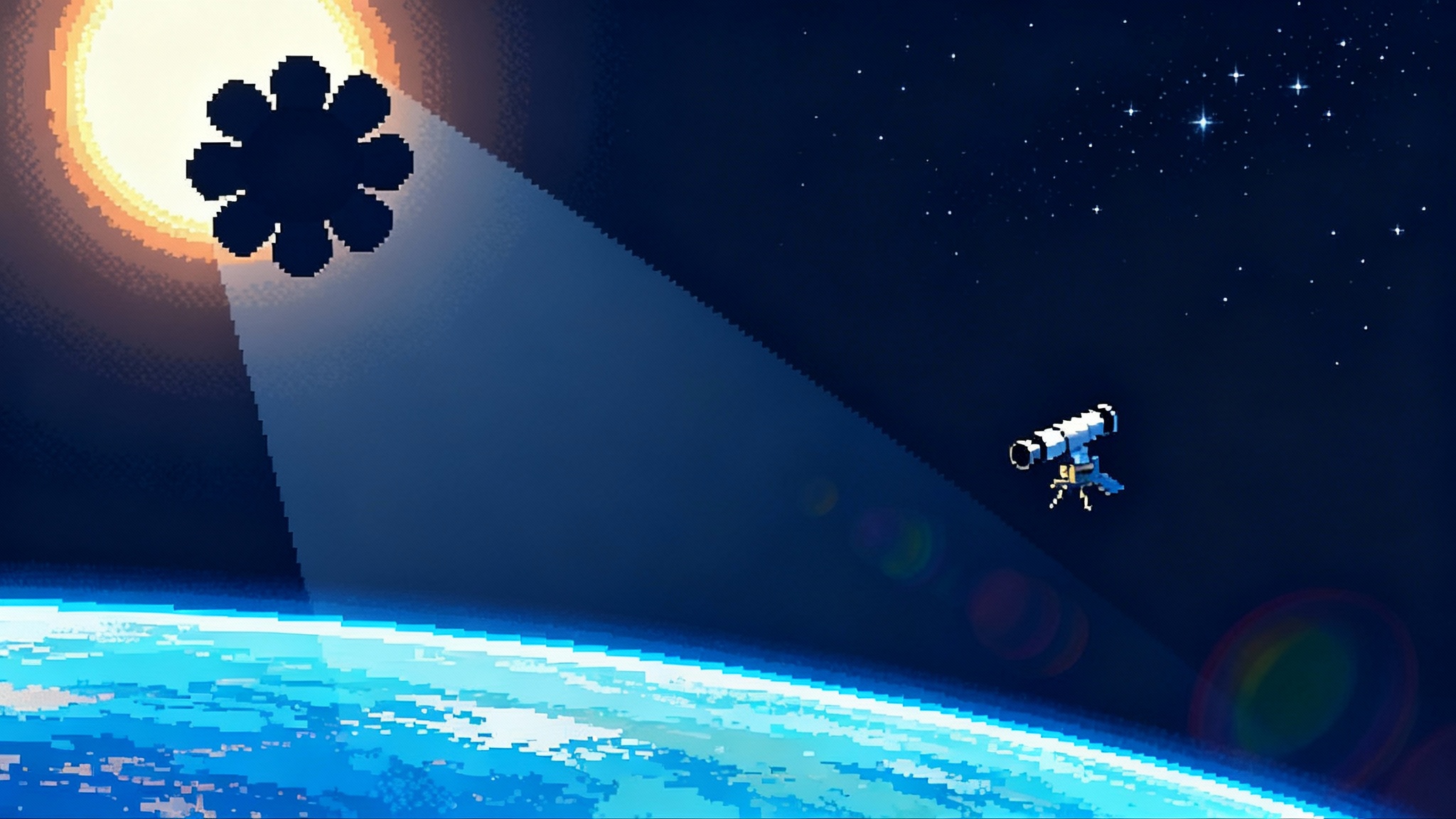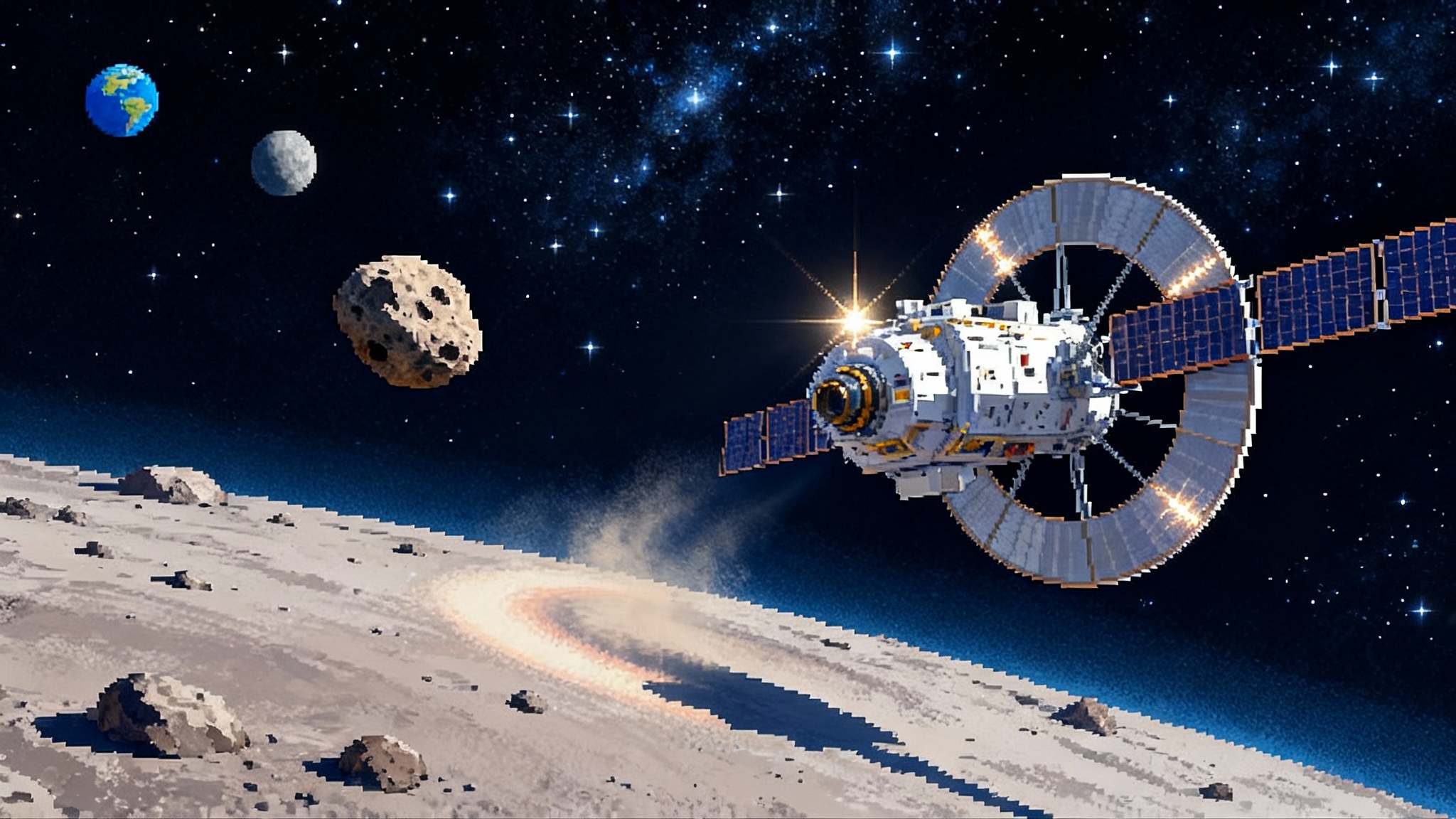Deep-space laser internet begins: DSOC and ESA connect
A summer of interagency laser links turned a decade of demos into day one of operations. DSOC on Psyche and Europe's first cross-support show optical can deliver 10-100x more science by 2030.

The moment the red light went green
In July 2025, a pair of mountain observatories in Greece flashed a pinpoint laser across the void and the Psyche spacecraft blinked back. It was not a pretty picture on a screen. It was an end-to-end deep-space optical link with a European ground segment, the first of its kind, and it worked. Months and years of lab tests, compatibility drills, and weather-watching condensed into a clean round trip of photons.
This was not the first victory for lasers in deep space. In December 2023, NASA’s Deep Space Optical Communications experiment, better known as DSOC, sent an ultra-high-definition video from tens of millions of miles away at 267 megabits per second, a rate that belongs in a living room rather than interplanetary space. The milestones since then have spanned greater distances, daytime operations, and two-way command. If you want one line that captures the shift: deep-space data links just graduated from trial to tool, with DSOC setting the pace and partners proving they can join the network. For background on what DSOC did and why it matters, see NASA’s program page on Deep Space Optical Communications.
In early July 2025, the European Space Agency ran its own cross-support with DSOC from Greece. A ground laser at Kryoneri sent a beacon to Psyche, which locked on and returned a downlink captured at the Helmos Observatory. ESA completed a four-link summer campaign, each more demanding than the last. The result was not just a pretty cat video from millions of kilometers away. It was a proof of interoperability between agencies that have long shared radio networks and now can share photons too. ESA’s account of Europe's first deep-space optical link explains the setup and the distances involved in clear detail.
Why 10-100x bandwidth alters the missions we fly
For decades, spacecraft have rationed bits like expedition teams ration water. Optical links shift that mindset. A tenfold to hundredfold jump in throughput does not just make today’s pictures prettier. It changes what we attempt.
-
Live high-definition science from deep space: Planetary scientists can watch a plume on Enceladus evolve over minutes, not wait days for a batch of compressed frames. Imagine Europa Clipper scale imaging at video cadence when geometry is favorable. Spectroscopists can sweep more wavelengths at finer resolution. The choice is no longer one filter or another but a full cube in one pass.
-
Teleoperations at Mars and the icy moons: If the upstream link can support low-latency command and the downlink can stream a rover’s stereo view in high definition, field geologists on Earth can do true supervisory control. You would not drive a rover like a remote-control car, but you could make confident, time-critical choices during short windows when the link budget and geometry line up. The impact is sharper where autonomy still struggles, such as delicate sampling, coring, or instrument placement.
-
Smaller probes with bigger results: When bandwidth is plenty, you can trade mass for data. A cubesat with a modest telescope and a smart compressor becomes far more valuable if it can empty its buffer quickly. Picture a shoebox-sized scout diving through a plume, shooting raw spectra and tens of frames per second, then dumping it all before its battery freezes. The mission becomes about the pass plan and the postpass science, not the months of downlink triage.
-
Continuous monitoring and campaigns: Weather on Mars, dust storms, auroras at Jupiter, plume variability at Enceladus, and solar events are all highly dynamic. With optical pipes, missions can schedule real campaigns with a scientific rhythm rather than stealing brief snapshots around communications constraints.
The bottom line: high data rates are not a luxury. They are a design variable that opens classes of investigations we could not justify before.
How a deep-space laser link actually works
If radio feels like shouting across a stadium, optical is like whispering with a laser pointer and a telescope. The physics is simple enough to visualize:
-
The spacecraft carries a laser that emits at near-infrared wavelengths. DSOC used a flight transceiver at a few watts of optical power. A few watts sounds tiny until you realize the beam is highly collimated. Instead of ballooning into a wide radio footprint, the beam stays pencil thin by the time it reaches Earth.
-
On Earth, a large telescope collects the faint trickle of photons and feeds them to a superconducting single-photon detector. At Palomar Observatory, the primary downlink station for DSOC, the detector counted individual photons while keeping false counts extremely low. Think of a raindrop sensor that can tell a drizzle from static.
-
To aim so precisely, the ground sends an uplink beacon. The spacecraft locks to that beacon, then lines up its own downlink in the opposite direction. The two sides close the loop by tracking each other in real time while correcting for motion, vibration, and atmospheric turbulence.
-
The data is encoded across the photons using modulations that balance rate and robustness. At closer ranges the system runs fast. As the distance increases and the photons get sparse, the rate drops according to the square of the distance and the link leans on coding gains to keep the bits flowing.
The nonobvious bit is the atmosphere. Clouds block lasers. Turbulence jitters the beam. Sunlight adds noise at certain wavelengths. The fix is not one giant telescope but many good ones in places with different weather and night-day cycles, plus adaptive optics to flatten the seeing. In practice, a network of optical ground stations in North America, Europe, South America, and Australasia gives enough diversity to turn fickle skies into an operational service.
2025’s interagency links and what they prove
-
Interoperability is real: ESA’s campaign with DSOC showed that a European uplink beacon and receiver can talk to a United States spacecraft carrying a United States laser transceiver and a United States operations concept. Agencies already cross-support in radio through the Deep Space Network and ESTRACK. Now optical can ride the same model.
-
Precision pointing is manageable: Getting a few-watt laser to hit a target hundreds of millions of kilometers away sounds like a parlor trick. In practice it is a solved control problem once you have a stable platform, fine steering mirrors, and good ephemerides. The trickier part is making it robust during daylight and through turbulence, which 2024-2025 tests increasingly tackled. For a related look at precision formation optics, see Proba-3's artificial eclipses.
-
Operational culture matters as much as hardware: The scheduling, weather forecasting, and real-time decision making looked like an early version of a service. Operators called the shots across continents, adjusted plans for clouds, and prioritized passes just as they do for radio today.
A realistic roadmap to an optical backbone by 2030
You cannot declare a backbone by press release. You build it link by link.
2025-2026: Turn the demos into a service tier
-
Formalize cross-support: Elevate optical links to the same standing as radio in international cross-support agreements. That includes clear definitions for pass handover, calibrations, key delivery for encryption, and responsibilities when weather kills a pass.
-
Commission site diversity: Add at least four optical ground stations to the joint pool with complementary weather and night-day coverage. A practical mix might include Southern California or Arizona, the Canary Islands or mainland Spain, Greece or Italy, Chile, and Western Australia. Each station should accept scheduled passes, run automated health checks, and export time-tagged photon counts for reconciliation.
-
Equip a near-term mission: The lowest risk path is to add an optical terminal to a smallsat riding along with a larger deep-space mission. Use it for opportunistic downlinks while radio carries critical data. The goal is operational experience, not headline rates.
2027-2028: Hybridize relay and direct-to-Earth
-
Optical on a Mars orbiter: Field an optical terminal on a relay orbiter that can see both Earth and the surface. Run hybrid passes where surface assets stream short bursts during geometry peaks, buffered by the orbiter. Prove that teleops workflows are practical a few times per week.
-
Harden the standards: Freeze an interoperable set of optical waveforms and coding schemes under the Consultative Committee for Space Data Systems. Today’s diversity of terminals is good for innovation but tough for scheduling. A stable baseline with optional extensions will let agencies and primes buy off the shelf without bespoke integration every time.
-
Automate scheduling: Borrow playbooks from cloud computing. Expose a simple request interface where missions bid for optical capacity with target rates, windows, and priority. Make the weather forecast and station status visible so science teams can pivot.
2029-2030: Declare initial operational capability
-
Site diversity plus automation: With six to eight stations and a scheduler that can chase clear skies, optical becomes predictable enough for mission planning. Not perfect, but better than we had with low-rate radio passes.
-
Mixed fleet adoption: New planetary missions budget optical as a standard subsystem, just like star trackers and reaction wheels. Older assets continue on radio, but the default for high-rate instruments becomes photons.
-
Interagency backbone: The ability to request an optical pass from a partner agency and to receive it with standard products is the tell. When a mission scientist can say “Let’s book an optical window on Tuesday because the plume is active,” and the system spits out a timeline and a file plan, the backbone exists.
What could stall progress, and how to unblock it
Engineering hurdles
-
Weather and daylight: Clouds are physics. So is the sky background. Mitigation: site diversity across continents, predictive scheduling that chases clear windows, and dual-wavelength options where detectors and filters handle brighter daytime skies. Action: fund three additional stations in the Southern Hemisphere and require missions to budget for schedule flexibility.
-
Pointing and vibration: Fine steering mirrors and quiet mounts fight jitter. So do careful thermal designs. Action: include high-rate inertial sensors on the terminal and close the loop at kilohertz rates. Run thermal-vacuum tests that deliberately heat-soak mechanisms to catch drift.
-
Photon-starved margins at long range: The inverse square law is indifferent to our ambitions. Mitigation: larger receive apertures, better detectors, more efficient coding, and tactical use of closer geometry for heavy dumps. Action: co-site optical receivers with large astronomical telescopes where feasible through time-share agreements, and budget for coding gain at the waveform level instead of bolting it on late.
Policy and operations hurdles
-
Standards and export controls: Optical terminals often touch sensitive components and cryptography. Agencies need shared standards for waveforms, keying, and post-processing that respect national rules while letting cross-support happen. Action: push an optical communications profile through the standards body by 2027 and pre-negotiate export exceptions for ground segment spares and calibration gear.
-
Safety and licensing: Lasers near airports and satellites raise safety questions. In practice, deep-space beams are narrow and scheduled, but regulators need confidence. Action: publish real-time pointing notices tied to aviation databases and space-traffic catalogs. Require automated shuttering when a protected volume is violated.
-
Budget psychology: Optical has lived in the demonstration bucket for years. Program managers hesitate to make it mission critical. Action: treat the next three missions as operational pilots with clear success criteria and contingency plans. Price and schedule them like radios, not as exotic one-offs.
Who is building the pieces
NASA’s Jet Propulsion Laboratory led DSOC’s flight transceiver and ground concept, with the Palomar Observatory’s Hale Telescope serving as a photon bucket for the downlink. ESA brought a transportable ground laser transmitter and a sensitive receiver to Greece and proved they can lock to and collect from a United States spacecraft. On the industrial side, companies like CACI International, Tesat, Mynaric, Thales Alenia Space, General Atomics, and Viasat are all shipping or testing optical terminals that span low Earth orbit crosslinks to deep-space-capable designs. Component suppliers such as laser manufacturers and superconducting detector teams are pushing the performance that makes the link budgets work.
The diversity is a strength if we converge on interoperable behaviors. The radio world got here with decades of standardization and test ranges. Optical can do it faster by agreeing early on reference waveforms, calibration routines, and file products.
What the next five years of science could look like
-
Mars weather at movie cadence: Orbiter instruments stream short high-definition clips of dust fronts and clouds during daily windows, giving climate modelers the same kind of temporal resolution they enjoy for Earth.
-
Icy moon plume campaigns: Fly through a plume at Enceladus with a compact mass spectrometer and dump the full uncompressed spectrum that night. No more throwing away interesting peaks because the downlink could not handle them.
-
Live instrument supervision: During a few optical windows per week, scientists watch and steer a drilling or coring sequence with confidence because they see texture and shadow, not just thumbnails. The rest of the time, autonomy carries the load.
-
Citizen science moments that matter: When a rare event occurs, like a massive dust storm ignition, missions can schedule an extra optical pass and share meaningful clips publicly within hours without robbing the science archive. It echoes the shift we covered in Rubin's year of fast discovery.
Concrete actions for 2026 budgets
-
Fund three additional optical ground stations with site diversity and adaptive optics. Target one in the Southwest United States, one in the Canary Islands or mainland Spain, and one in Chile.
-
Mandate an optical terminal on at least one deep-space rideshare per year. Keep the radio link as baseline, but learn optical operations in parallel.
-
Finish and ratify an interoperable waveform and coding suite for deep-space optical under the established standards body. Publish a public conformance test plan so industry can certify without waiting on a flight opportunity.
-
Stand up a joint optical scheduling service that exposes an application programming interface. Let missions request passes, see probabilistic weather, and plan dumps like they plan downlink masks today.
-
Create a shared risk reserve for optical operations, just as networks maintain spares and surge capacity. Weather will bite. Budgets should not.
The takeaway
In 2025, deep-space laser links stopped being a stunt. DSOC showed the rates and the distances. ESA showed cross-support. The physics is sound, the detectors work, and the operational playbook is starting to look familiar. To turn this into a backbone by 2030, we do not need miracle lasers. We need more sites, stable standards, and the will to make optical a first-class option. Do that, and the next wave of missions will plan science around an abundance of bits, not a scarcity of them. That is how an era begins: not with a single light, but with a network that stays on.








